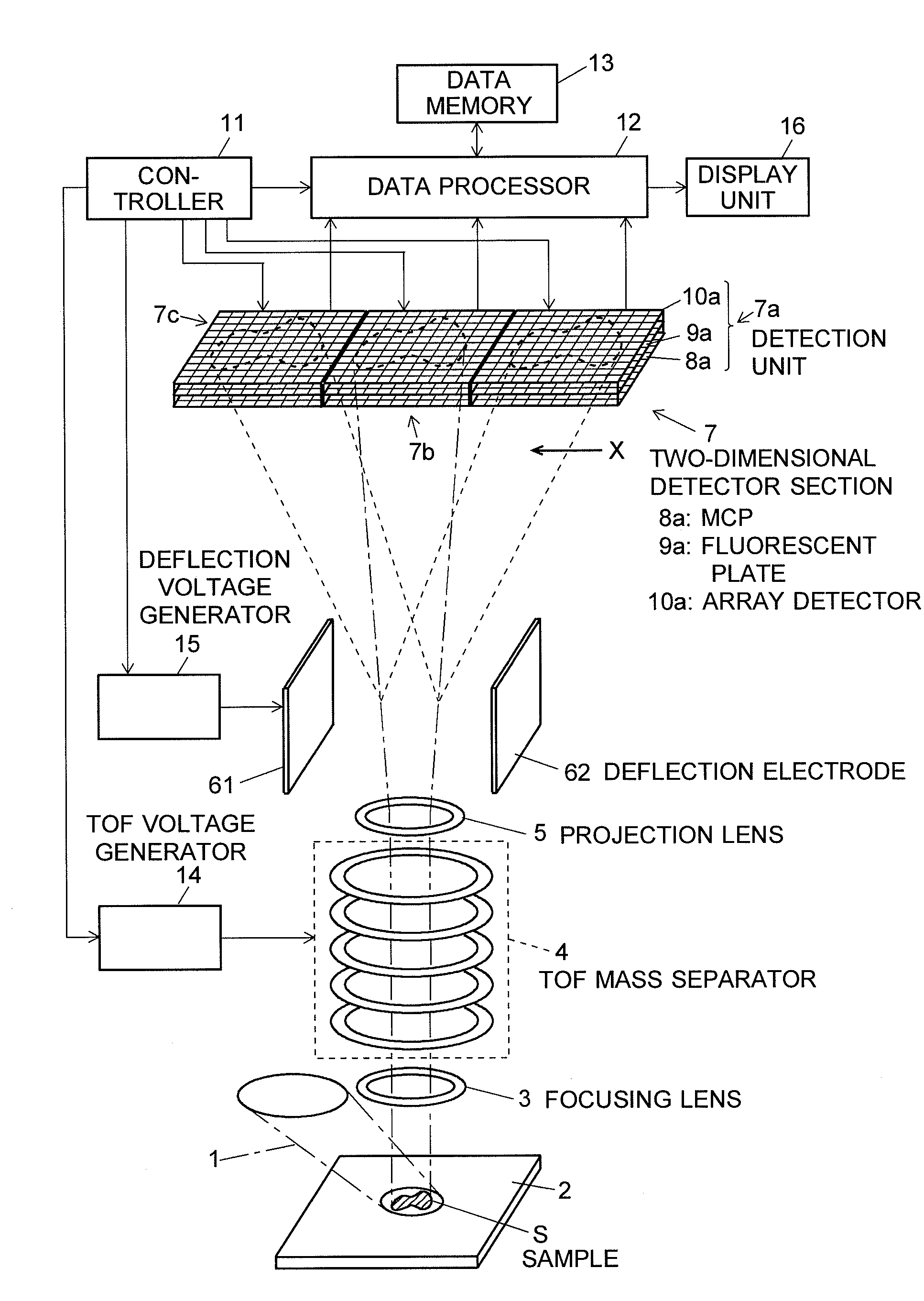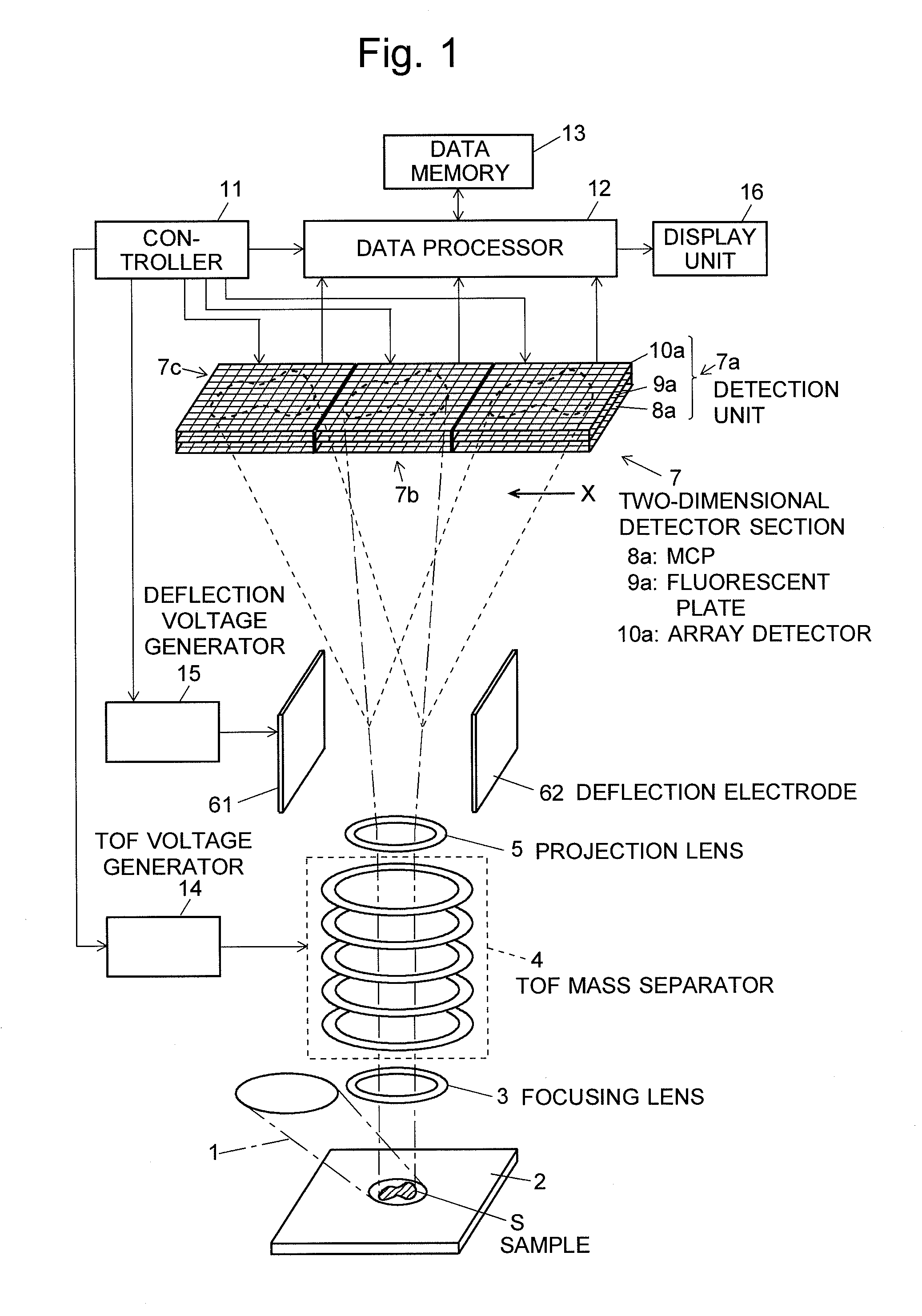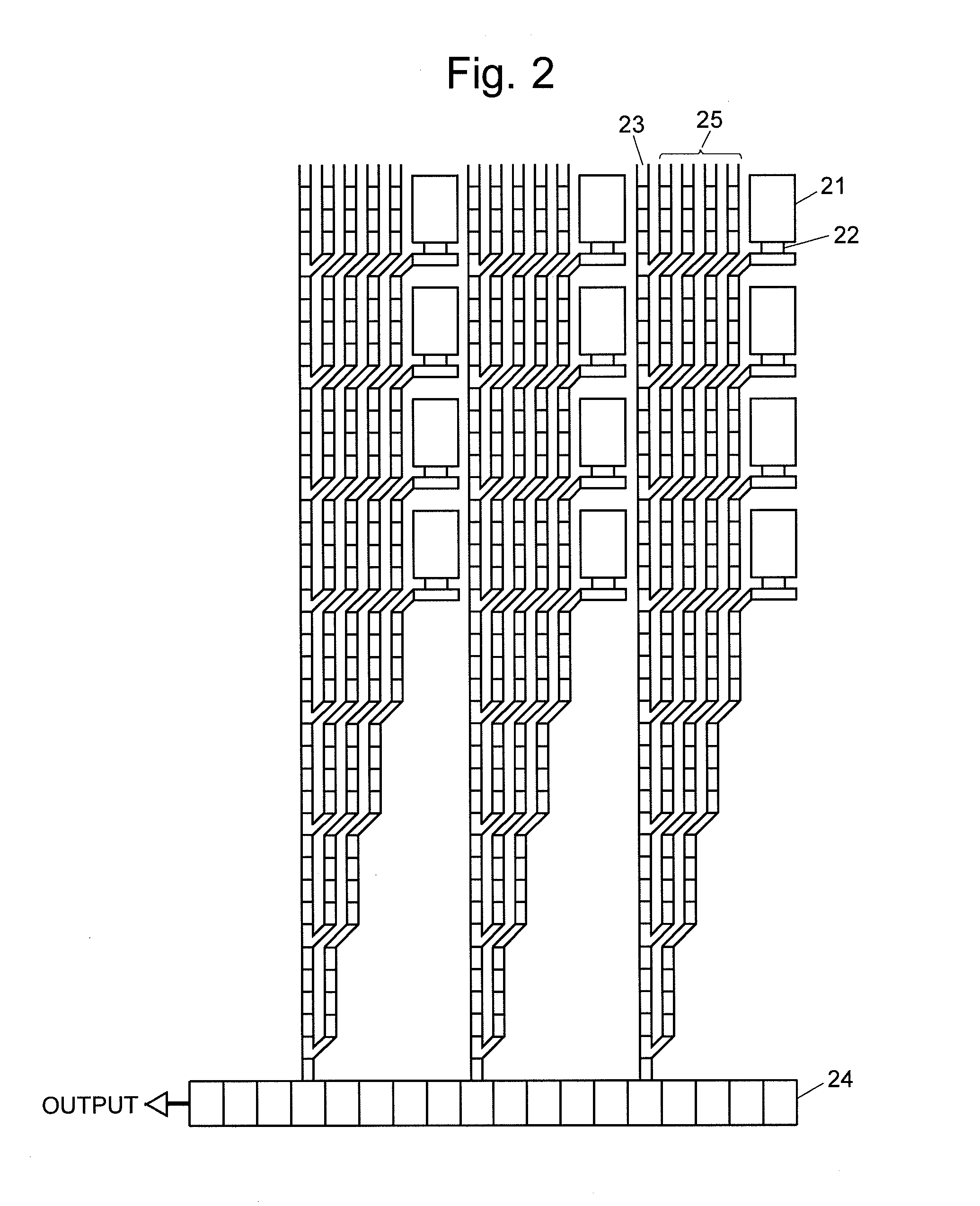Mass spectrometer
a mass spectrometer and mass spectrometer technology, applied in the field of mass spectrometers, can solve the problems of increasing the number of times of such operations, requiring a considerable long period of time, and requiring a large amount of time to repeat such operations, and achieve the effect of high mass resolution
- Summary
- Abstract
- Description
- Claims
- Application Information
AI Technical Summary
Benefits of technology
Problems solved by technology
Method used
Image
Examples
first embodiment
[0044]A mass microscope, which is one (first) embodiment of the mass spectrometer according to the present invention, is hereinafter described with reference to the drawings. FIG. 1 is a configuration diagram of the essential portions of the mass microscope in the first embodiment.
[0045]This mass microscope employs a laser desorption ionization (LDI) method in order to simultaneously ionize all the components contained in a sample. In this method, a sample S placed on a sample stage 2 is irradiated for a short period of time with a two-dimensionally spread ray of ionization laser light 1. The irradiation of the sample S with the laser light 1 causes various substances present within a two-dimensional area on the sample to be almost simultaneously ionized. Thus, various ions are generated in a two-dimensionally distributed form. These ions are then introduced through a focusing lens 3 into a time-of-flight (TOF) mass separator 4 while maintaining the relative positional relationship ...
second embodiment
[0066]Another (second) embodiment of the present invention is hereinafter described with reference to FIG. 8. FIG. 8 is a configuration diagram of the essential portions of the mass microscope in the second embodiment. The components identical to those of the first embodiment are denoted by the same numerals, and explanations of these components are omitted. The blocks representing the configuration of the electrical circuits of the control system or processing system are also omitted to simplify the figure.
[0067]The configuration of the second embodiment includes another pair of deflection electrodes 301 and 302 facing each other in the direction perpendicular to the previously mentioned parallel deflection electrodes 61 and 62. The nine detection units 7a, 7b, 7c, 7d, 7e, 7f, 7g, 7h and 7i are arrayed not only along the X-axis but also along the Y-axis. In this configuration, the flight path of the ions is deflected in the X-direction by a deflection electric field created by the ...
third embodiment
[0068]Another (third) embodiment of the present invention is described with reference to FIG. 9. FIG. 9 is a configuration diagram of the essential portions of the mass microscope in the third embodiment. The components identical to those of the first embodiment are denoted by the same numerals, and explanations of these components are omitted. The blocks representing the configuration of the electrical circuits of the control system or processing system are also omitted to simplify the figure.
[0069]Unlike the first and second embodiments in which an electric field was used to deflect ions, the third embodiment uses a magnetic field to deflect ions. Specifically, a pair of parallel plate magnetic poles 311 and 312 are disposed in place of the deflection electrodes in the space between the projection lens 5 and the two-dimensional detector section 7. A static magnetic field is created between these parallel plate magnetic poles 31. In general, an ion being accelerated by a voltage E ...
PUM
 Login to View More
Login to View More Abstract
Description
Claims
Application Information
 Login to View More
Login to View More - R&D
- Intellectual Property
- Life Sciences
- Materials
- Tech Scout
- Unparalleled Data Quality
- Higher Quality Content
- 60% Fewer Hallucinations
Browse by: Latest US Patents, China's latest patents, Technical Efficacy Thesaurus, Application Domain, Technology Topic, Popular Technical Reports.
© 2025 PatSnap. All rights reserved.Legal|Privacy policy|Modern Slavery Act Transparency Statement|Sitemap|About US| Contact US: help@patsnap.com



